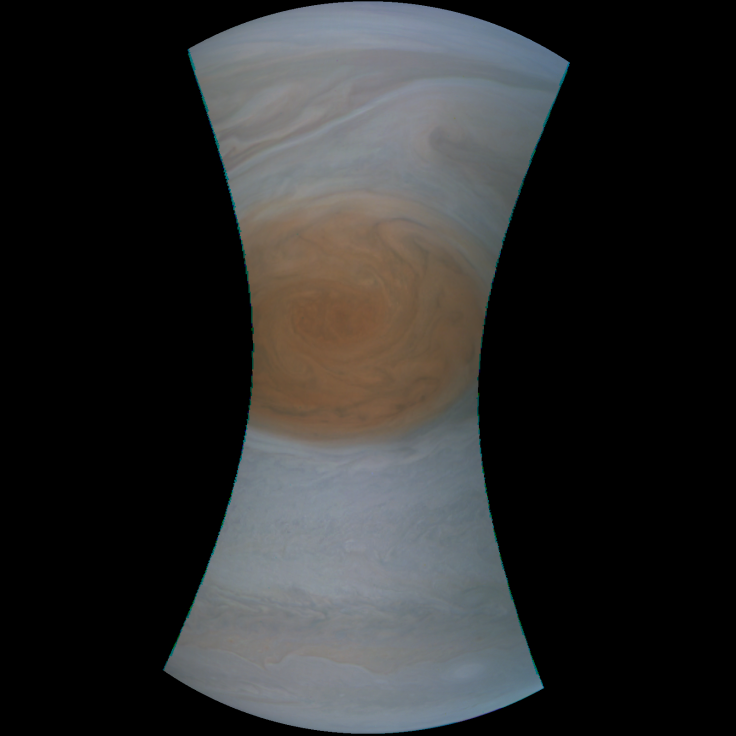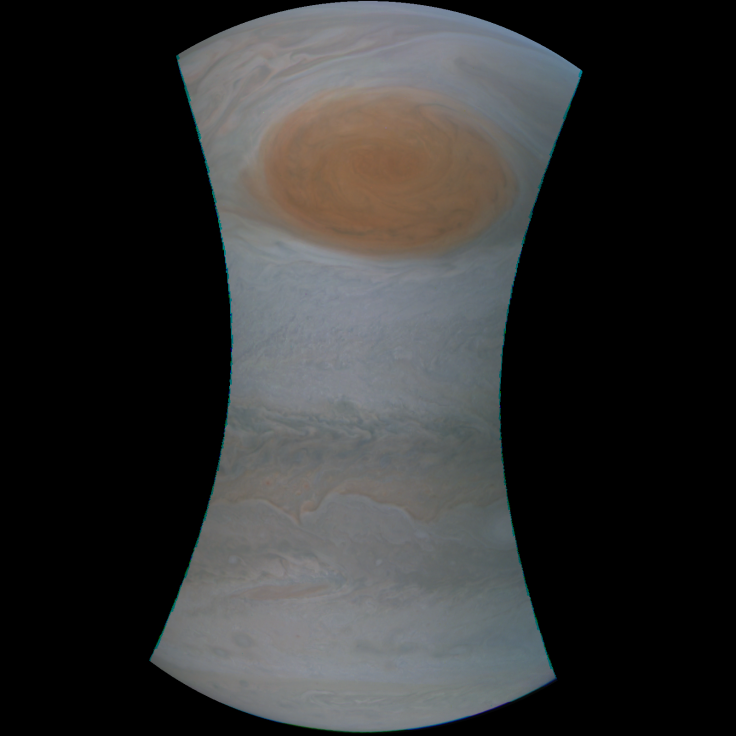Jupiter Red Spot Storm Pictures: NASA's Juno Spacecraft Sends Back Photos

NASA began releasing photos of Jupiter’s Great Red Spot on Wednesday, after its spacecraft Juno flew over the planet’s raging storm earlier this week.
The photos are raw images of the most prominent weather system on the gas giant, perhaps the most famous cyclone taking place outside of Earth. Juno has been orbiting Jupiter for about one year and went on a path on July 10 about 5,600 miles above the Great Red Spot to take a closer look at the swirling storm. It marked the closest NASA has ever gotten up until now.

“Jupiter’s mysterious Great Red Spot is probably the best-known feature of Jupiter,” Scott Bolton, principal investigator of Juno, said in a NASA statement before Juno’s flyover. “This monumental storm has raged on the solar system’s biggest planet for centuries.”
The Great Red Spot has been spinning on Jupiter at least since 1830, when experts first began taking note of it, and it could be older than 350 years. The elliptical storm is wider than the Earth, with its swirling red eye of cloud bounded by jet streams, trapping it between them. It goes so far up into Jupiter’s atmosphere that it reaches 5 miles above the planet’s clouds.
Read: What Storms Look Like on Other Planets Around the Solar System
But as eternal as the storm seems, it won’t last forever. Scientists announced a few years ago that the Great Red Spot is shrinking — measurements taken in the late 1800s put it at 25,500 miles across, but now the ellipsis has turned more circular, with a length less than half that distance. It is now just over 10,000 miles across.
“Astronomers have followed this downsizing since the 1930s,” NASA said at the time, so the decrease doesn’t appear to be a random fluctuation.
Scientists have suggested that the Great Red Spot is shrinking because fewer smaller storms are feeding into it — a sacrifice that would increase its power — or because the vortices that it is eating up are spinning more slowly or in the opposite direction, which would create a drag on its own spin and sap its power.
Read: Moon Volcanoes Make for Beautiful Auroras on Jupiter
Part of the reason astronomers wanted Juno to get close to the Great Red Spot and inspect it is to learn more about how the storm operates. The flyover was designed to get the spacecraft to “dive in to see how deep the roots of this storm go, and help us understand how this giant storm works and what makes it so special,” Bolton said.
One point of interest is the effect the storm has on the atmospheric temperature. It’s possible that the Great Red Spot feeds heat into the upper atmosphere and helps keep the planet warm despite its position in the outer solar system, far from the sun.
NASA is expected to combine Juno’s observations with those from telescopes on Earth and in space to get the most out of the data.
My latest #Jupiter science flyby is complete! All science instruments + #JunoCam were operating to collect data https://t.co/gITSYkWmO6 pic.twitter.com/fOc6Z8USdF
— NASA's Juno Mission (@NASAJuno) July 11, 2017
© Copyright IBTimes 2024. All rights reserved.





















